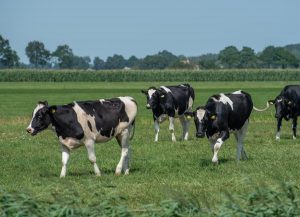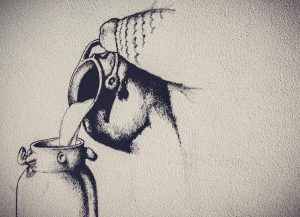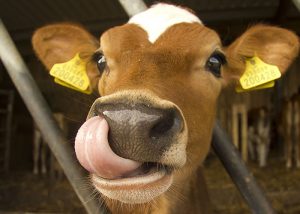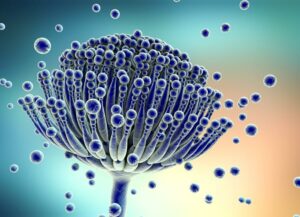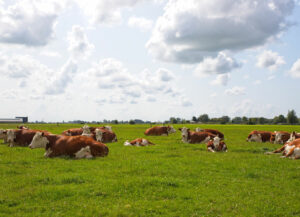Alvaro Garcia
Thermostasis is the process by which warm-blooded animals keep their body temperature constant despite changes in environmental temperatures. Heat stress occurs when calves are incapable of dissipating enough heat to maintain their core body temperature below 38.5ºC. This increase in body temperature results from the combination of heat from the environment and that produced internally during nutrient metabolism.
In the northern hemisphere it is quite common for calves to be housed in polypropylene hutches with a small restricted outside area. During warm summer days calves seek the shade supplied by the hutch, however the heat inside of it will be concentrated. The calf then resorts to physiological mechanisms to lower its body temperature.
Under these conditions it is easy to verify an accelerated respiratory rate also accompanied by increases in rectal temperature, ear temperature, heart rate, and salivary cortisol (SC).
Ambient temperature and humidity determine the heat stress threshold
Not only is the absolute ambient temperature important but its combination with humidity in what is known as the temperature-humidity index (THI).
In adult cattle the upper critical value for this index is between 72 and 74, with some authors even considering up to 78 before respiratory rate and rectal temperature increase. In young calves however the optimum THI has not been determined, it is suspected however it should differ from a mature lactating cow since the heat increment resulting from forage fermentation in the rumen is very low, and the metabolic heat associated with milk production is non-existent.
A recent experiment (L. Kovács et al. 2020) was conducted to assess precisely these differences between young and mature dairy animals. Pre-weaned Holstein calves of 46.7 ± 1.8 days old (range 44–49 d), weighing: 74.3 ± 1.6 kg (range: 70.3–78.6 kg) were housed individually in 1.65-m × 1.20-m polypropylene hutches with a 1.60-m2 exercise area.
Hutches were aligned in the same row, and oriented north to south and were all lined with straw bedding. All calves received a grain starter, alfalfa hay, and fresh water. There was a 24-h adaptation period (day 0) for the animals to get used to the heart rate sensors employed and the presence of the researchers. Ambient temperature and relative humidity were recorded for all calves within the hutches and above the exercise pens with a 30-min recording frequency between days 1 and day 4 (last test recording).
The THI was calculated using an equation for the hutch and the exercise pen environments: where Tdb was the dry bulb temperature and Twb the wet bulb temperature. Respiratory rate in breaths/min was recorded at 4-h frequency, by counting while lying the movements of the abdomen during respiration.
Once respiratory rate was recorded, rectal temperature was measured with a 10-s digital thermometer. Ear skin temperature was also measured at the same time using an infrared thermometer. The heart rate was measured with 30-min frequency. Saliva samples were obtained with 4-hour frequency, and salivary cortisol determined by a radioimmunoassay method.
All measurements were performed continuously during the duration of the experiment. Calf location (hutch or exercise pen) was determined using video recordings of 2 day/night outdoor cameras to select the appropriate THI (calculated for the hutch or the pen area) to match the physiological measures during statistical analysis.
There was extreme heat during days 1 and 2 of the experiment, then slightly dropping on day 3 (although still high) and then followed by day 4 with normal temperatures. The lowest upper critical THI value was associated with an accelerated heart rate. Heart rate was analyzed during undisturbed lying periods however the researchers contend that an increased overall activity because of discomfort could have affected these values.
Calculating the temperature-humidity index in youngstock
The breakpoint in respiratory rate indicated that heat stress started when the THI index reached 82.4 which differs from the one reported for adult dairy cows. These results indicate the first physiological response under heat stress is increased respiratory rate.
In this experiment calves had 0.88°C higher rectal temperature on the heat stress day than the suggested 39.2°C. This indicates that the upper threshold of normal core body temperature of 1-month-old calves occurs when the THI peaked at 94.
Physiological measures indicated heat stress occurs in dairy calves between THI 78 and 88. It further suggests calves tolerate extreme heat load better than mature cows. It was thus concluded that comfort of young calves is likely compromised above a THI of 78 and that they experience significant heat stress when above a THI of 88.
Reference
L Kovács, FL Kézér, P Póti, N Boros, K Nagy. Short communication: Upper critical temperature-humidity index for dairy calves based on physiological stress variables. J Dairy Sci. 2020 Mar;103(3):2707-2710.
© 2020 Dairy Knowledge Center. All Rights Reserved.


